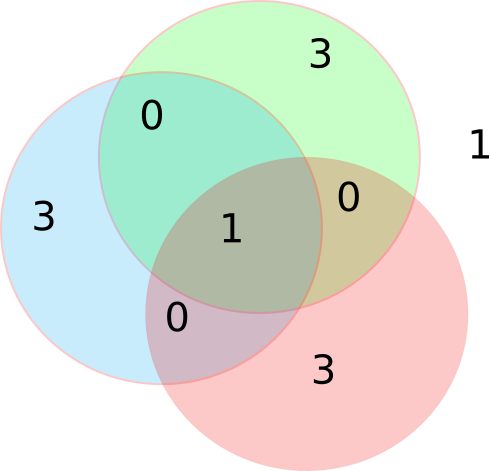-
This chapter covers Discrete (finite or countably infinite) r.v..
This contrasts to continuous, to be
covered later.
-
Discrete r.v.s we've seen so far:
- uniform: M events 0...M-1 with equal probs
- bernoulli: events: 0 w.p. q=(1-p) or 1 w.p. p
- binomial: # heads in n bernoulli events
- geometric: # trials until success, each trial has probability p.
-
3.1.1 Expected value of a function of a r.v.
- Z=g(X)
- E[Z] = E[g(x)] = \(\sum_k g(x_k) p_X(x_k)\)
-
Example 3.17 square law device
-
\(E[a g(X)+b h(X)+c] = a E[g(X)] + b E[h(x)] + c\)
-
Example 3.18 Square law device continued
-
Example 3.19 Multiplexor discards packets
-
Compute mean of a binomial distribution (started last Fri).
-
Compute mean of a geometric distribution (started last Fri).
-
3.3.1, page 107: Operations on means: sums, scaling, functions
-
iclicker: From a deck of cards, I draw a card, look at it, put it back
and reshuffle. Then I do it again. What's the probability that exactly one of
the 2 cards is a heart?
- A: 2/13
- B: 3/16
- C: 1/4
- D: 3/8
- E: 1/2
-
iclicker: From a deck of cards, I draw a card, look at it, put it back
and reshuffle. I keep repeating this. What's the probability that the 2nd card
is the 1st time I see hearts?
- A: 2/13
- B: 3/16
- C: 1/4
- D: 3/8
- E: 1/2
-
3.3.2 page 109 Variance of an r.v.
- That means, how wide is its distribution?
- Example: compare the performance of stocks vs bonds from year to year.
The expected values (means) of the returns may not be so different.
(This is debated and depends, e.g., on what period you look at).
However, stocks' returns have a much larger variance than bonds.
- \(\sigma^2_X = VAR[X] = E[(X-m_X)^2] = \sum (x-m_x)^2 p_X(x)\)
- standard deviation \(\sigma_X = \sqrt{VAR[X]}\)
- \(VAR[X] = E[X^2] - m_X^2\)
- 2nd moment: \(E[X^2]\)
- also 3rd, 4th... moments, like a Taylor series for probability
- shifting the distribution: VAR[X+c] = VAR[X] (corrected from
VAR[c]) [[#e4]]
- scaling: \(VAR[cX] = c^2 VAR[X]\)
-
Derive variance for Bernoulli.
-
Example 3.20 3 coin tosses
- general rule for binomial: VAR[X]=npq
- Derive it.
- Note that it sums since the events are independent.
- Note that variance/mean shrinks as n grows.
-
iclicker: The experiment is drawing a card from a deck, seeing if it's
hearts, putting it back, shuffling, and repeating for a total of 100
times. The random variable is the total # of hearts seen, from 0 to 100. What's
the mean of this r.v.?
- A: 1/4
- B: 25
- C: 1/2
- D: 50
- E: 1
-
iclicker: The experiment is drawing a card from a deck, seeing if it's
hearts, putting it back, shuffling, and repeating for a total of 100
times. The random variable is the # of hearts seen, from 0 to 100. What's
the variance of this r.v.?
- A: 3/16
- B: 1
- C: 25/4
- D: 75/4
- E: 100
-
3.4 page 111 Conditional pmf
-
Example 3.24 Residual waiting time
- X, time to xmit message, is uniform in 1...L.
- If X is over m, what's probability that remaining time is j?
- \(p_X(m+j|X>m) = \frac{P[X =m+j]}{P[X>m]} = \frac{1/L}{(L-m)/L} = 1/(L-m)\)
-
\(p_X(x) = \sum p_X(x|B_i) P[B_i]\)
-
Example 3.25 p 113 device lifetimes
- 2 classes of devices, geometric lifetimes.
- Type 1, probability \(\alpha\), parameter r. Type 2 parameter s.
- What's pmf of the total set of devices?
-
Example 3.26.
-
3.5 More important discrete r.v
-
Table 3.1: We haven't seen \(G_X(z)\) yet.
-
3.5.4 Poisson r.v.
-
The experiment is observing how many of a large number of rare events happen in, say, 1 minute.
-
E.g., how many cosmic particles hit your DRAM, how many people call to call center.
-
The individual events are independent.
-
The r.v. is the number that happen in that period.
-
There is one parameter, \(\alpha\). Often this is called \(\lambda\).
\begin{equation*}
p(k) = \frac{\alpha^k}{k!}e^{-\alpha}
\end{equation*}
-
Mean and std dev are both \(\alpha\).
-
In the real world, events might be dependent.
